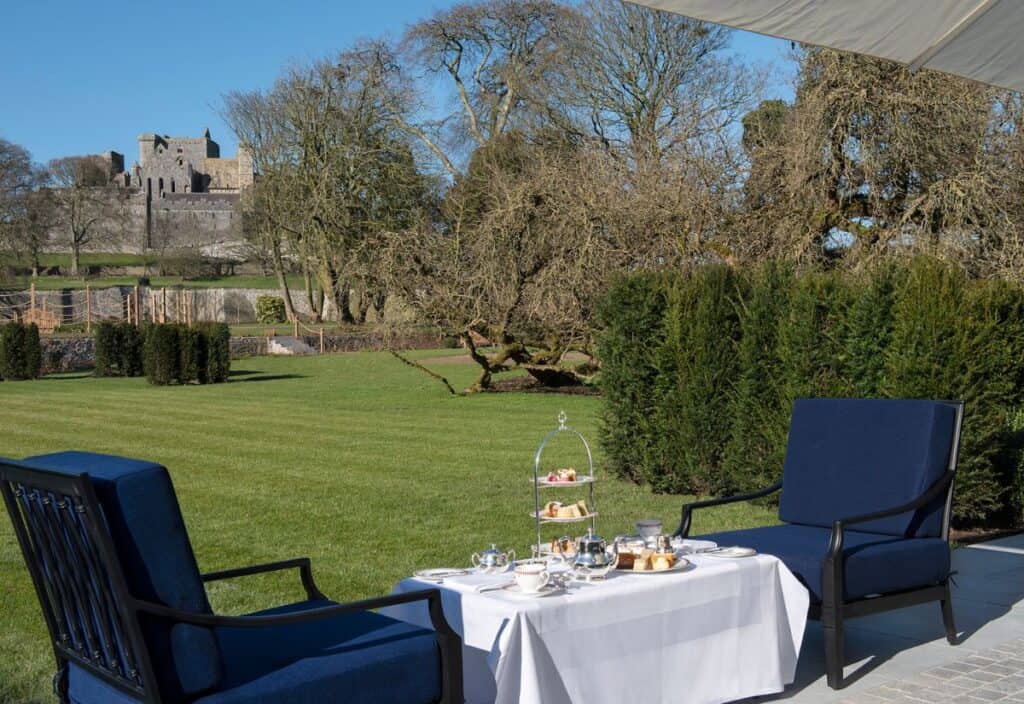The global culinary tourism market could reach $40.53 billion by 2030, growing nearly 20% every year. Hotels are fueling that growth with everything from Michelin-starred dining rooms to mountaintop tasting menus that turn a stay into a complete experience. As more properties compete by offering bigger and more unique dining experiences, travelers are planning getaways where lodging comes with a menu worth traveling for.

From Ireland’s vaulted dining rooms to Italy’s truffle feasts and from Colorado’s alpine lodges to Alaska’s remote kitchens, food now drives many travelers to book their trips. Each meal ties flavors to the land and its traditions, giving guests a deeper connection to the places they visit.
Hotels fuel the culinary travel
Culinary tourism continues to expand, and hotels play a key role in shaping how travelers experience it. As more people seek authentic experiences, food has become a direct way to engage with local culture. Many hotels respond by building menus around regional ingredients and traditions, with chefs sharing stories that bring each dish to life.
Across popular travel spots, hotel kitchens feature global techniques to keep menus fresh and inviting. Guests now consider dining as much as comfort when choosing where to stay, and a standout restaurant can define the entire trip.
Titanic Hotel’s Wolff Grill experience
The city’s Titanic Quarter is home to Titanic Hotel Belfast, where historic rooms provide a setting for local cuisine. Located inside the former Harland & Wolff headquarters, the hotel’s Wolff Grill offers modern Irish dishes made with ingredients from nearby farms and suppliers. The menu focuses on seasonal produce and seafood that show off Northern Ireland’s growing food scene.
Guests can enjoy afternoon tea in the Drawing Office, a bright space now used for dining. The service includes pastries, finger sandwiches and scones with jam and fresh cream. The bar in Drawing Office Two also serves cocktails and a selection of Irish whiskeys.
Casa di Langa’s truffle-driven fine dining
In Italy’s Piedmont region, Casa di Langa gives guests a close look at the area’s truffle culture through hands-on experiences. The resort’s Truffle Concierge leads guided hunts through private woodlands and teaches guests how to find and handle truffles before returning to the kitchen.
What begins in the forest continues at Fàula Ristorante, where Michelin-trained chef Daniel Zeilinga prepares contemporary Piedmontese dishes featuring freshly unearthed truffles and ingredients from the property’s biodynamic garden and greenhouse.
Fàula Ristorante embodies the hotel’s focus on sustainability and regional cooking. With vineyard views and seasonal menus, Casa di Langa delivers a dining experience that connects visitors directly to the land and its long culinary history.
Sonnenalp Hotel’s alpine comfort in Vail
Inside the Sonnenalp Hotel in Vail, the Swiss Chalet brings a true taste of Europe to the Colorado mountains. The restaurant serves traditional Alpine dishes such as raclette, fondue and schnitzel, letting guests dine communally after a day outdoors. The menu also includes kase spatzle, Swiss dumplings topped with cheese and crispy onions, along with other hearty regional favorites that fit the mountain setting.
Diners often finish with desserts like apple strudel and chocolate fondue, paired with a strong wine list that rounds out the experience. With its wooden design and soft lighting, the chalet creates a welcoming space for travelers seeking comfort and authenticity.
Alyeska Resort’s mountaintop dining
Seven Glaciers Restaurant gives guests a true taste of Alaska. A scenic tram carries diners 2,300 feet up Mount Alyeska to reach the restaurant, which serves three- and four-course tasting menus built around wild game, sustainably caught seafood and locally foraged produce. Every recipe uses ingredients that reflect Alaska’s contemporary food scene and its connection to nature.
Located within Alyeska Resort, the restaurant holds AAA Four Diamond status and earned a spot on Wine Enthusiast’s 2019 list of America’s 100 Best Wine Restaurants. Dining comes with glacier and mountain views that provide a true alpine experience. It’s a setting that brings fine dining to one of the most remote and striking corners of Alaska.
The Bishop’s Buttery at Cashel Palace
Earning a Michelin star in the 2024 Great Britain & Ireland Guide, The Bishop’s Buttery at Cashel Palace stands out for its modern take on Irish food. The restaurant works closely with Tipperary farmers and local producers to create traditional dishes with contemporary flavors. Dishes often include black sole, keeping the menu grounded in Irish roots.
For a closer look at the kitchen’s craft, guests can book the Chef’s Table, which serves a tasting menu with wine pairings chosen by head sommelier Farrah Scanlan. The dining room’s vaulted ceilings and open fire create a setting that fits the restaurant’s simple, polished style.
Travel experience built around cuisines
The rise of culinary travel has led hotels to make cuisine part of their identity. Across destinations, many now focus on local ingredients, regional recipes and dining that shows the character of their communities. Chef-led menus, seasonal dishes and hands-on programs connect guests with the farmers, producers and traditions behind each meal. In today’s market, food matters as much as comfort and location when travelers choose where to stay.
Jennifer Allen is a retired chef turned traveler, cookbook author and nationally syndicated journalist; she’s also a co-founder of Food Drink Life, where she shares expert travel tips, cruise insights and luxury destination guides. A recognized cruise expert with a deep passion for high-end experiences and off-the-beaten-path destinations, Jennifer explores the world with curiosity, depth and a storyteller’s perspective. Her articles are regularly featured on the Associated Press Wire, The Washington Post, Seattle Times, MSN and more.
The post Hotels turn dining into destination travel as culinary tourism gains momentum appeared first on Food Drink Life.






















Commented